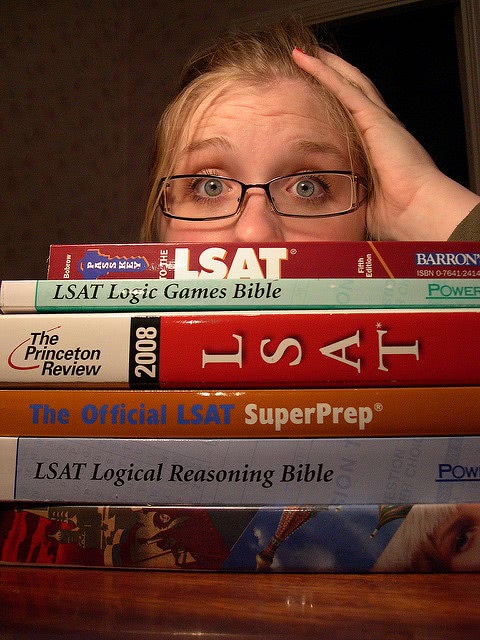The Law School Admission Test – or LSAT – is a standardized test for admission into law school. Understanding the LSAT scoring system and the LSAT score range is important so you can make sense of the report. This will help you determine your chances of getting into a top tier law school.
What is the LSAT?
The LSAT is administered by the Law School Admission Council (LSAC) in a multiple-choice test format. It’s designed to assess your readiness for law school. Taking the LSAT is mandatory for all students who wish to apply to law school and your scores should accompany your application for admission.
Your LSAT score and your undergrad GPA are considered the two most important factors that most law school admission panels look at when assessing your application. While some schools may weigh both factors equally, most weigh your LSAT score more heavily than your GPA. If you are looking to get into a good law school, you must aim for the highest LSAT score range possible.
Some law schools have started accepting GRE scores instead of LSAT scores. Before you schedule any test, it may help to make a note of which test the law schools on your shortlist are looking for.
LSAT Sections & How Each Section Is Scored
Before discussing the LSAT score range in more detail, it helps to take a sneak peek into what sections are on the test and how each section is scored.
The LSAT is set in a multiple-choice format and administered in two separate parts. The first part consists of three sections, which are scored and one section, which is unscored. The second part consists of only one section, which is unscored.
This the break up of the three scored sections:
- The Reading Comprehension section. This 35-minute section consists of about 27 multiple choice questions and accounts for approximately 36% of your total LSAT score.
- The Logical Reasoning section. This 35-minute section consists of about 24 to 26 multiple choice questions and accounts for approximately 33% of your total score.
- The Analytical Reasoning section. This is also a 35-minute section. It is made up of four logic games with 4 – 7 multiple choice questions related to each game. It accounts for about 31% of your total score.
Note: The Analytical Reasoning section is being cancelled with effect from beginning August 2024. From August 2024 onwards, the LSAT test will consist of only two scored sections – Reading Comprehension and Logical Reasoning.
The Variable Section and LSAT Writing make up the two unscored section. Answering both these sections well is important although they don’t affect your overall LSAT score range.
LSAT Scoring
The LSAT is scored on a scale of 120 to 180 points. The score sheet that you receive will have three distinct scores – a raw score, a scaled score, and a percentile score.
Here’s what each of these means:
- Raw score: This is the total number of scored questions that you answered correctly and there are no penalties for wrong answers.. The number of correct answers = your raw score. So, if you got 67 answers correct, your raw score would be 67.
- Scaled score: The scaled score is the most important and it what law schools will look at when assessing your application. The scaled score is calculated using a Score Conversion Chart. You enter your raw score into the chart and it converts the value into a scaled score, which ranges from 120 – 180. This chart is unique to each LSAT test. This is the updated LSAT score conversion chart for the new August 2024 format. For example, a raw score of 67 would convert to a scaled score of 170. The conversion table for raw score to scaled score changes every test.
- Percentile score: Your percentile score compares test-takers across different testing cohorts. It shows how your score is relative to others who have taken the test over a 3 year span. Over the years, the conversion from scaled to percentile score has remained consistent. For example, a scaled score of 153 has been equivalent to a 50th percentile score for multiple years in succession.
What Do The LSAT Percentiles Mean?
LSAT percentiles are an important factor in how a student’s LSAT score is assessed. Many colleges weigh your percentile more than your raw or scaled scores.
Every college has its own percentile score. Understanding your LSAT percentile score will give you a better idea of your chances of getting admission into a particular law school.
This is what your percentile score would mean for you:
25th percentile. If you fall in the 25th percentile of a school’s range, it means that 75% of the students who were recently admitted has higher scores than you. It also means, that 25% of the admitted students has scores lower than you. With these numbers, you still have a chance of getting accepted into the program. Put this college in your list of reach schools.
50th percentile. If you fall in the 50th percentile of a school’s range, it means that most students recently admitted had about the same score as you. Your score is average for that law college and you have a pretty good chance of getting accepted.
75th percentile. If you fall in the 75th percentile of a school’s range, it means your score is higher than many recently admitted students. You have good acceptance odds into any school if you score in the 75th percentile. With this percentile, you could consider applying to higher-ranked law colleges.
Decoding The Conversion From Raw Score To Percentile Score
A look at the two examples below demonstrates how even a small improvement can increase your percentile score by several points.
Let’s say you answer 67 questions correctly. In this case, your raw score would be 67. This converts to an LSAT score of 170, which places you on in the 95th percentile on average. Being in the 95th percentile means that only 5% of all students who take the test score 170 or higher.
In another example, let’s say you answer 55 questions correctly. In this case, your raw score would be 55. This converts to an LSAT score of 160, placing you typically in the 75th percentile.
As you can see from the two examples above, the range is very narrow. Adding just a few more correct answers can boost your scaled LSAT score and place you in a higher percentile. This boosts your acceptance odds into a top-ranked law schools.
LSAT Score Considerations for Law School Admissions
Law school admissions panels consider several factors when assessing your application including your LSAT score.
A higher score indicates that you have what it takes to succeed in law school and beyond. This is what admission panels want to see in prospective students. In general, the higher your score, the better your acceptance chances into top-tier law colleges.
An average score may narrow your options and you may have to ‘settle’. A low score may make it impossible for you to get into any law school at all.
So what LSAT score do you need to get into law school? It helps to see the average score and percentile scores of law schools.
Average LSAT Scores For Top Law Schools
These are the top 10 law schools with median LSAT scores at or above the 90th percentile for admitted students. These scores are based on the scaled score range of 166 – 180 and represent the top 10% of test takers.
| Law School | LSAT score |
| Yale University | 175 |
| Harvard University | 174 |
| Stanford University | 173 |
| Columbia University | 173 |
| University of Chicago | 173 |
| University of Pennsylvania (Carey) | 172 |
| New York University | 172 |
| University of Virginia | 171 |
| University of Michigan, Ann Arbor | 171 |
| Northwestern University (Pritzker) | 171 |
These are the top 10 law schools with median LSAT scores at or above the 75th to 89th percentile for admitted students. These scores are based on the scaled score range of 160-165 and represent the top 25% of test takers.
| Law school | LSAT score |
| University of Wisconsin-Madison | 165 |
| University of Colorado-Boulder | 164 |
| Pepperdine University | 164 |
| Indiana University- Bloomington | 164 |
| Ohio State University (Moritz) | 164 |
| Northeastern University | 163 |
| University of Arizona | 163 |
| Tulane University | 161 |
These are the top 10 law schools with median LSAT scores at or above the 50th to 74th percentile for admitted students. These scores are based on the scaled score range of 153-159 and represent the top 50% of test takers.
| Law school | LSAT score |
| University of Oklahoma | 159 |
| University of Kansas | 158 |
| University of Cincinnati | 158 |
| University of Oregon | 158 |
| Texas Tech University | 157 |
| Syracuse University | 157 |
| University of New Mexico | 156 |
| University of Arkansas-Fayetteville | 156 |
You Can Sign Up For LSAT Score Preview
After you’ve taken the test, you can register for LSAT Score Preview. This allows you to check your score and decide whether you want to keep it as part of your LSAC file or cancel it. Usually, the LSAC will send your LSAT score to all the schools you’re applying to. But if you think you’ve performed particularly poorly and don’t want to send that particular test score to any school, you can request to have it deleted from your file.
It costs $45 if you register for LSAT Score Preview before the first day of testing for a given test. If you sign up after testing has concluded, the registration fee jumps to $75.
You can also cancel your score without purchasing Score Preview. You must do this within 6 calendar days after your test date.
Law Schools Do Not Have Cutoff LSAT Scores
Most law schools do not have cutoff scores. Although every school lists their median range of LSAT scores for the incoming class of students, they often accept applicants with scores that fall below their listed median range. So, even if your LSAT score is below the median range for a particular school, you still have a chance of acceptance. A high GPA, strong personal assay, and relevant extracurricular activities can help tilt the scales in your favor.
Use College Raptor to discover personalized college matches, cost estimates, acceptance odds, and potential financial aid for schools around the US—for FREE!







